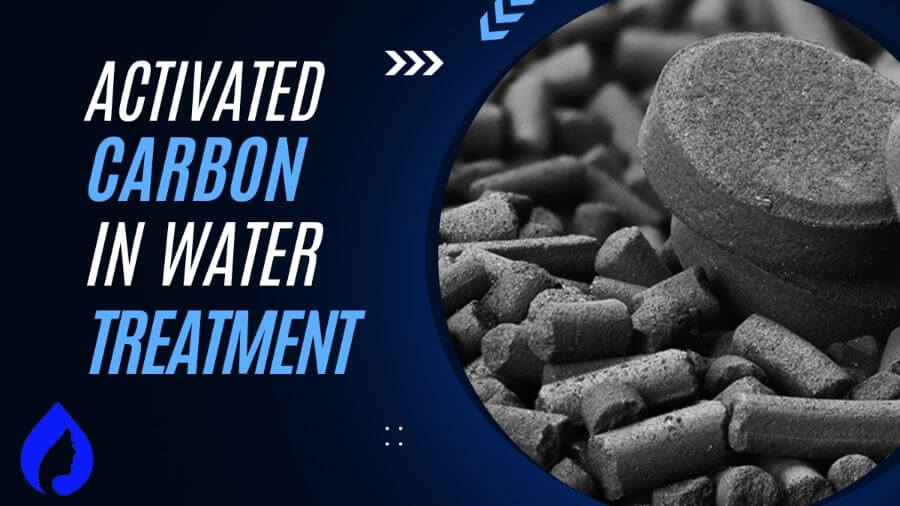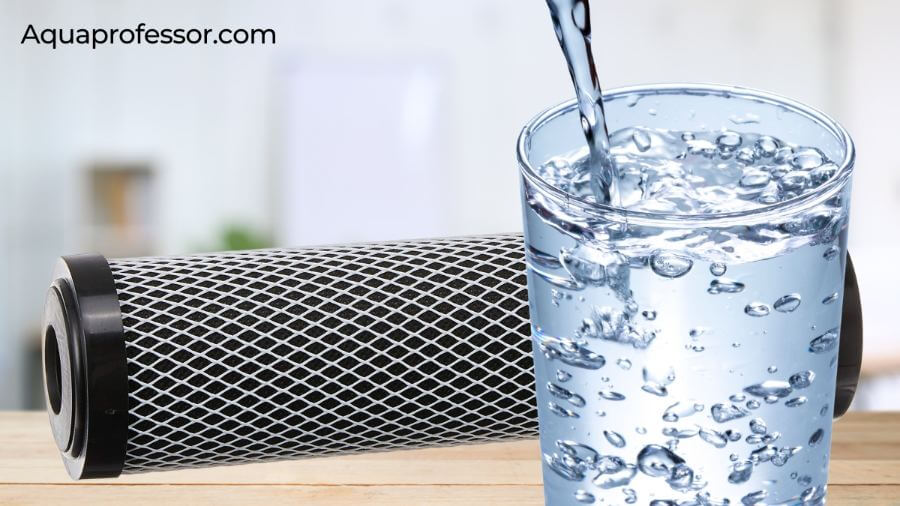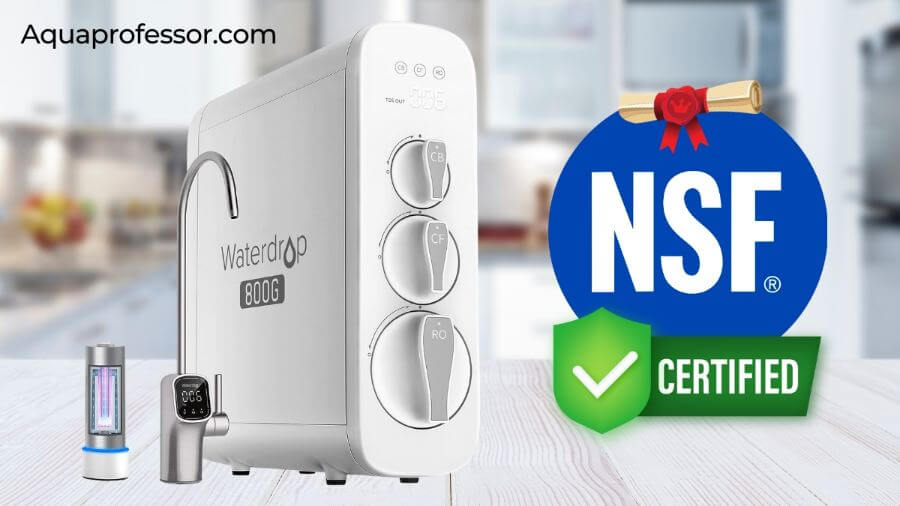
Although activated carbon filters are excellent for removing chlorine and VOCs, they have several disadvantages:
Continue reading to understand the 3 disadvantages of activated carbon in water filtration and if it’s worth using.
⚖️Advantages and Disadvantages Of Activated Carbon In Water Treatment
Here are the benefits and drawbacks of using activated carbon filters to purify water:
✅ Pros Of Activated Carbon

Removes Most Common Water Pollutants
Activated carbons effectively remove various common water pollutants. These include:
Easily Available And Affordable
Raw materials for activated carbon are easily available and are affordable to buy.
For maintenance, simply replace filter cartridges every 6-9 months, depending on your incoming water quality and usage.
Removes Undesirable Water Odor And Taste
Excessive chlorine and chlorine byproducts (THMs) make tap water taste bad. Activated carbon filters effectively remove bad chlorine odor from water through their micro and macro pores.
Further, GAC (Granular Activated Carbon) filters can remove the rotten egg odor from hydrogen sulfide.
Uses Natural Raw Materials
The raw materials of activated carbon filters include natural materials high in carbon content, like coconut shells or animal bones.
We also have newer, affordable raw materials like biomass.
The Cherry on the cake, they don’t waste water like RO, which makes them more eco-friendly.
❌ Cons Of Activated Carbon

Requires Combined Media To Be Effective
Activated carbon filters need combined media to increase surface area for greater removal of contaminants. Such combined media include:
You should check NSF certifications to find if the manufacturer uses different combined media to stand true to their contaminant removal claims.
Slow Flow Rate
Activated carbon filters contain minute pores and are designed to increase contact time. It aids in effective filtration but reduces the water flow rate and water pressure.
Doesn’t Remove Bacteria
Activated carbon filters can’t effectively remove bacteria. Further, some studies show harmful bacterial count can grow and spread through blocked carbon-activated filters. It can increase potential health risks.
In contrast, RO or nano-filters are far more efficient in removing bacteria from water.
📝 Takeaway: Is Activated Carbon Filtration Effective For Drinking Water?

Activated carbon filtration effectively removes organic materials and common city contaminants like chlorine and its byproducts from drinking water.
It also improves water quality by removing heavy metals (if NSF certified) and foul odor and taste.
However, it’s important to know that activated carbon filter systems can’t handle disease-causing microorganisms like bacteria, viruses, and coliform (like RO). They also don’t soften water (like water softener), so hard water problems continue.
So always test your feed water and opt for an NSF-certified water filter that removes your target contaminants.
🙋♀️ Activated Carbon In Water Treatment: FAQs
How does an activated carbon filter work?
An activated carbon filter works on a wide range of impurities through adsorption.
In this process, all the impurities, like organic chemical compounds, gasses, odors, microorganisms, and other substances, stick to the highly porous structure of the activated carbon.
Due to the Van der Waals force and some chemical reactions, these impurities stick to the active carbon surface while water molecules flow through the pores. Hence, you get clean water free from pollutants.
What is the benefit of embedding magnetite in activated carbon?
The benefits of embedding magnetite (magnetic Fe3O4 nanoparticles) in activated carbon include:
1. Improved adsorption capacity to remove heavy metals and magnetic nanoparticles.
2. Removal of copper ions from water.
3. Easy recovery and regeneration of magnetic activated carbon particles (MACP) after the adsorption process (through magnets).
What do activated carbon filters remove from water?
Activated carbon filters eradicate a wide range of inorganic and organic contaminants from water, such as:
1. Chlorine and chloramines
2. Disinfection byproducts
3. Herbicides and pesticides
4. Heavy metals (if it’s NSF-certified)
5. Volatile organic compounds like benzene, toluene, and xylene
6. Trihalomethanes (THMs) – chlorine byproducts;
7. PFAS
Where are activated carbon filters used?
Activated carbon filters are used in various sectors to purify air and water.
1. Air purifiers – residential, commercial, and industrial air filtration process
2. Point of use water filters – pitcher, under-sink, and countertop filters for household water filtration
3. Municipal water treatments – remove chlorine, foul odors and taste, and certain organic matters.
4. Environmental remediation – to treat contaminated soil and groundwater and stormwater management
5. Food and Beverage industry – Decolorize and purify food and beverages like syrups, vegetable oils, fats, fruit juice, honey, sugar, soft drinks, alcoholic beverages, etc.
What are the different types of carbon water filters?
The different types of carbon water filters with different adsorptive capacity include:
1. Granular Activated Carbon (GAC) filters
2. Carbon block filters
3. Catalytic carbon filters
Sayan understands that access to clean water doesn’t have to be costly.
He strives to provide knowledge of water purification techniques in the simplest way possible so that we can lead a healthy life without breaking our bank.
